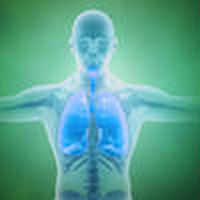In the Western world we have taken for granted that we knew to breathe, simply because our body breathes. However it has been proven that we can take up to 3,5 litres of air with each inhalation and that the majority of untrained people It is inspired only a pint of air.
 And it seems that this is a habit that we have been dragging for a few centuries. According to, When the missionaries arrived in the Hawaiian Islands, natives called them "haoles", which means "people who is not breathing".
And it seems that this is a habit that we have been dragging for a few centuries. According to, When the missionaries arrived in the Hawaiian Islands, natives called them "haoles", which means "people who is not breathing".
It seems that at that time, Hawaiians used the word "ohana" with the meaning of "people who breathe together"
Historically, the cultures have been awarded great importance to breath, that was reflected in the language used by. This is seen among the aborigines of Western Australia, Native Americans of California, the Aboriginal people of Greenland, the Seminole (or primitive inhabitants of Florida), the Romans, and a host of other peoples.
A very curious and very common phenomenon is to find relations between words Breathing and spirit, something that happens today in the own Spanish with "inspire" or in English with "inspiration".
There were schools of breathing in Persia, Arabia, Egypt, Greece, Rome,… but among all the traditions cultural ancient are the Tibetan, china and the hindu which exert more influence today.
Traditionally, various respiratory practices were directed towards three different objectives:
1. To purify the senses, physically and spiritually and to exploit its potential.
2. As a mechanism that awakens the healing force of the own individual.
3. Religious purposes, to achieve transcendent States and make contact with other dimensions of reality.
Like this, the teachings of the Tibetan Mystics they warn that: "The skillful control of breath beat passion, anger and carnal desires, reach the serenity, It prepares the mind for meditation and spiritual power awakens". (PAG.159, Gunnel – see the bibliography) and also tell us that "The most important result of practice with breath is to understand that the process of breathing is the link that unites the conscious with the subconscious, rough material and subtle material, voluntary and non-voluntary functions, and therefore, the most perfect expression of the nature of life" (extracted from Govinda: "Foundations of Tibetan mysticism").
In the India, conscious breathing had great development in the different schools of Yoga and Ayurveda (traditional hindu medicine). They say, in the Vedic Scriptures refer a 2.400 breathing techniques, different purposes each of them.
Yogi Ramacharaka (in "Hindú science Yogi's breath") comments such as "Recognized authorities have established that", If a generation of people breathing correctly, It could regenerate the race, and the disease would be so rare that it would be a curious. Whether seen from the West as if seen from the East, the connection between correct breathing and health is out of sight and is easy to explain".
The main breathing technique of the Chinese tradition is called Chi Gong, where chi means "vital" and "exercise" Gong. This practice is traditionally known as the "method to eliminate the disease and prolong life".
The Chinese have developed a set of very sophisticated breathing techniques, each with a specific purpose and with the name of the effect that is intended to achieve. The effect of the breath is divided into three categories: the effects of body, of the psyche and spirit.
Another interesting fact about the breathing, and contributing to the thesis that "breathing is healthy" the fact that constitutes it breath made the 70% excretory function, which means that the 70% toxins (physical, mental and emotional) our body can eliminate through breathing… and this helps create health.
Currently, there are different methods that include breathing as an essential element in their practices, such as the Yoga, the Chi-gong, the Tai-chi, the singing lessons, learning with iwind musical instruments, The sports, the submarinismo, The Reichian therapy…, but the following techniques are especially concentrated on breathing:
• HOLOTROPIC BREATHWORK, developed by Stanislav Grof.
• Therapy of revival of Frank Lake (England)
• Breath holorenica. Dtor. Josep Mª Fericgla
• REBIRTHING or Renaissance, that you will get more information in the next section of this website.
